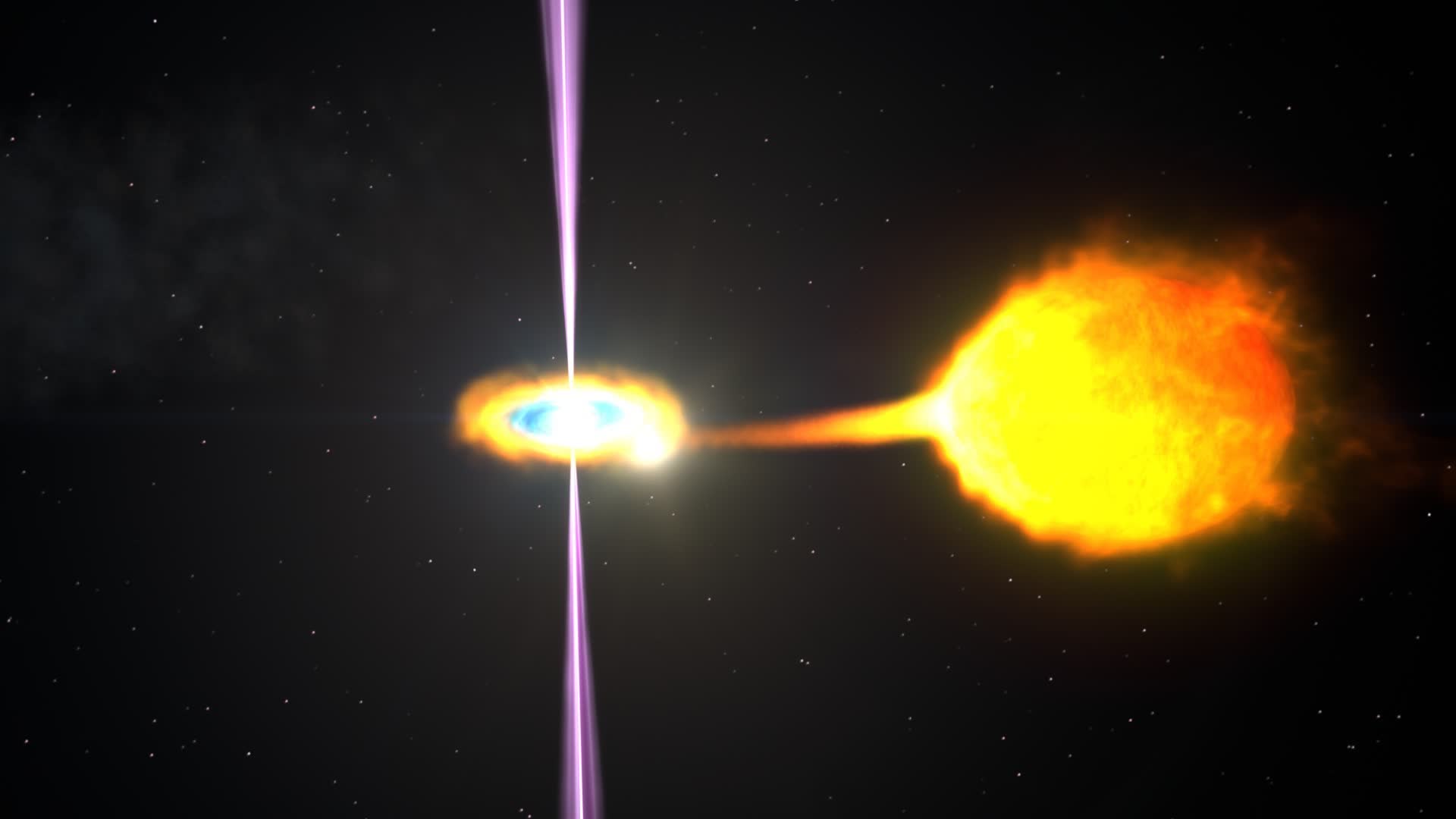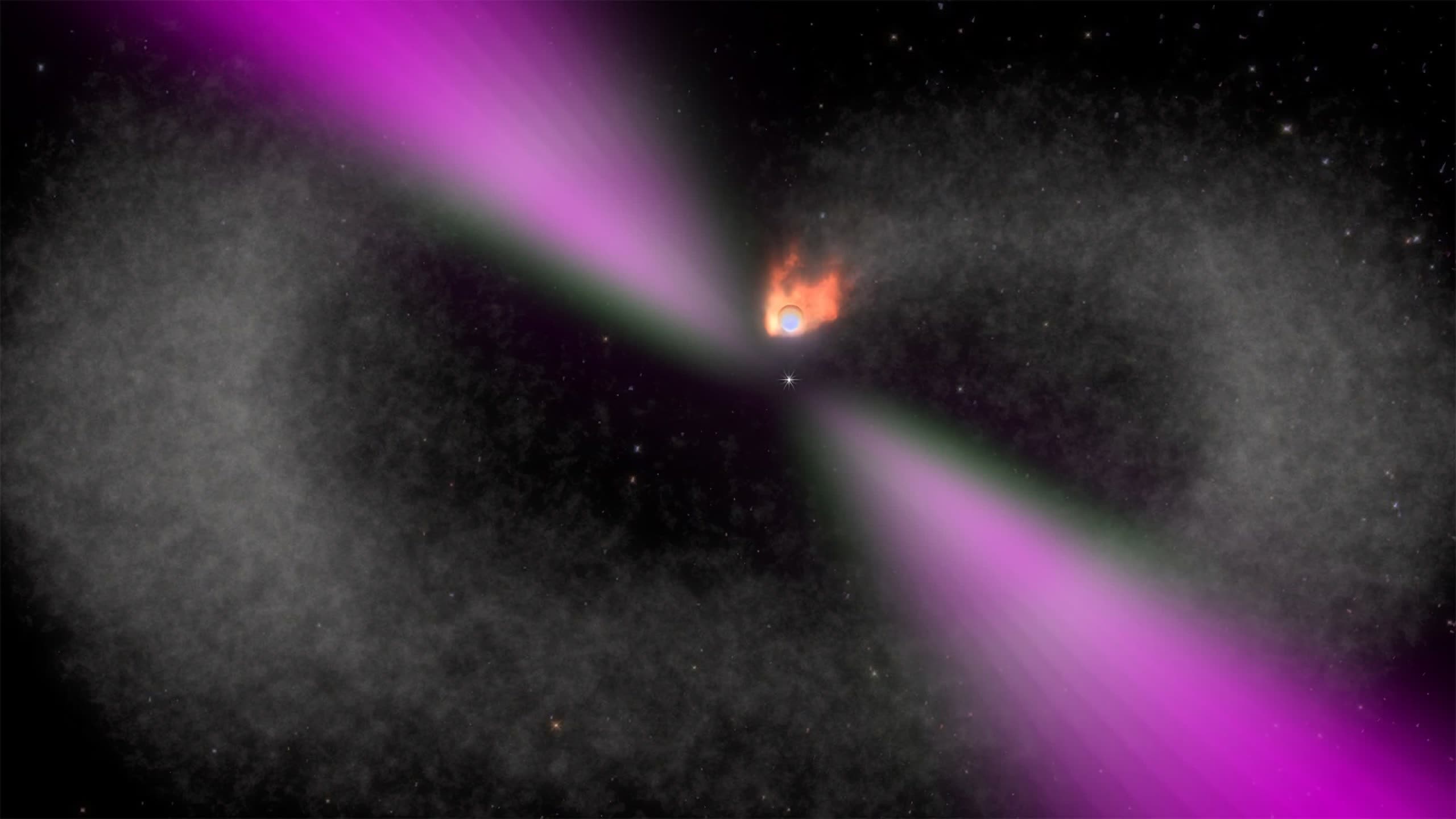In context: Man has forever looked at the stars. These heavenly bodies are fascinating even with the naked eye. However, advancements in observation have made space even more intriguing. Astronomers frequently find astral bodies that push the boundaries of our current knowledge. A recent finding of a binary — possibly trinary — system shows we still have a lot to learn about how the objects in our universe work.

Scientists at Caltech's Zwicky Transient Facility (ZTF) at the Palomar Observatory have discovered a strange pair of binary stars. It is the "black widow" star system designated ZTF J1406+1222. On Wednesday, the astronomers published a paper on their findings in the Nature academic journal. There are a few things that make ZTF J1406+1222 unique.
First, it helps to know what we're dealing with here. Black widows are a rare class of binary star system where a dead neutron star, also known as a pulsar, rotates around a hydrogen-rich star — in this case, a brown dwarf. Over time the pulsar destroys its companion by siphoning material from it and blasting it with the high-intensity gamma radiation (NASA animation below).
One of the things that makes this one strange is that the pulsar is moving very, very fast. While this is typical behavior in black widow systems, this one breaks the record with an orbital period of just over an hour — 62 minutes. The previous record holder was PSR J1653-0158, with a solar year taking only 75 minutes. Other black widow systems are more in the range of eight to nine hours, which is still pretty quick.
"This 62-minute orbit is remarkable because we don't understand how the stars could get into such a tight orbit," says Kevin Burdge, lead author of the study. "The process of the pulsar ablating its companion should actually drive them apart. This is pushing the boundaries of what we thought possible."
Black widows are very rare. They were only first discovered in the 1980s, and since then, astronomers have only found a few dozen others. This one happens to be the closest one we have observed so far, which is another thing that makes it unique.

Finally, rounding out the weirdness, a third star seems to be gravitationally bound to the binary system making it a trinary system. This third star is in a class called "cool subdwarfs." These objects have very little mass or metals, being mainly made up of hydrogen and helium.
What is weird about this third body is that theoretically, it should not be bound to ZTF J1406+1222. It lies about 600 AU from the pair (one AU is the distance between the Earth and our sun), and its low mass means that just about any stellar event should have knocked it out of orbit. Technically, the supernova from when ZTF J1406+1222's pulsar formed should have blasted it out of the system's gravitational grip.
Although ZTF J1406+1222 appears to be a new black widow, the scientists are careful to note their results have not yet been confirmed.
"Our data indicate we are looking at a black widow binary, but it could be something entirely new," Burdge said.
The team is waiting for NASA's Chandra X-ray Observatory to confirm its findings.
Image credit: Syphon and Blast by NASA's Goddard Space Flight Center